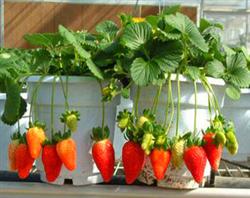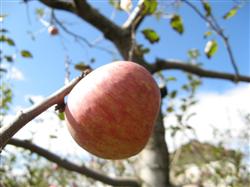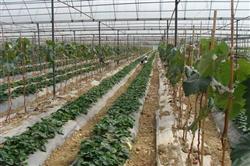Pot cultivation technique of Strawberry

Strawberry is a perennial herb of Rosaceae. Its flowers are white and fruit red, the plant is short, the leaves are thick, and the blue leaves hold the red fruit, creeping on the ground, which is interesting. In the warm climate areas, the leaves do not fall in winter, and the flower and fruit period is long. There are flowers and fruits from November to May of the following year, and flower beds and flower borders can be arranged. Potted strawberries are placed in several cases or hanging indoors or on the balcony when the fruit is bright red, especially during New Year's Day and Spring Festival, which is not only a good ornamental fruit, but also a good taste of fresh fruit, which will greatly increase the joyful atmosphere of the festival. With the improvement of people's living standards, the demand for flowers will increase day by day, especially for the dual-purpose flowers which can be used to appreciate and taste delicious fresh fruit. Therefore, the development of strawberry pot culture is a land-saving and efficient cultivation technique, which has a broad prospect. The main results are as follows: 1. To select suitable varieties for potted strawberries, we should first choose varieties with good quality, erect leaves, correct fruit shape, large grains and good ornamental. Different regions should also be decided according to the local climatic conditions, generally warm winter areas should choose shallow or shallow dormancy varieties, such as Fengxiang, Chunxiang, Lihong, Mingbao, Stone Berry No. 2, Ghost Nu Gan, Nufeng and so on. Varieties with shallow or deep dormancy should be chosen in warmer areas, such as Minglei, Libao, Mingjing, Xinming, Shirberry 1 and so on. In cold areas, varieties with deep dormancy are selected, such as all-Star, New Star, Baojiao Zaosheng, Hani, Zaoguang and so on. If the varieties with deep dormancy are cultivated in warm areas, the plants will be completely dwarfed due to the lack of low temperature below 5 ℃ necessary to break dormancy. Although they can blossom and bear fruit, the fruit becomes smaller due to poor vegetative growth, which affects their ornamental ability. If the varieties with shallow dormancy are cultivated in cold areas, because the low temperature below 5 ℃ is too much, the vegetative growth in spring is too prosperous, even too long, inflorescences are less, and they are easy to get sick and bear less fruit, which will also affect their ornamental ability. 2. the final ornamental value and yield of strawberry bonsai depend on the quality of seedlings, which is closely related to the nutritional status of plants and the development of roots. Therefore, the cultivation of strong seedlings is the key. The experiment shows that the most ideal method of raising strawberry seedlings in potted plants is to raise seedlings in high mountains, that is, to raise seedlings in high and cold areas above 800m above sea level. The higher the altitude is, the lower the temperature in summer is, which is beneficial to the growth and development of nutritious seedlings, strong vitality and good root system. The seedlings are strong and strong, and the flower buds are more differentiated and full. The nursery should select the areas where strawberries have not been planted, apply sufficient base fertilizer, and select robust seedlings as mother plants when the temperature reaches 18-20 ℃. The cultivation distance of mother plants is 40cm × 80cm. After planting, stolon seedlings can occur in large numbers from June to July, flower bud differentiation can be carried out in August, and seedlings can be picked up in late September. 3. The root system of potted soil equipped with potted strawberries grows in a very small basin. Under limited soil conditions, strawberry plants with large fruit and luxuriant leaves should be cultivated, which has strict requirements on soil fertility and permeability. If only natural soil is used, it is difficult to meet the nutrients needed for strawberry growth and development, so culture soil should be used. The so-called cultivated soil is made of natural soil (usually garden soil) and other materials according to a certain proportion, which has the characteristics of sufficient nutrients, rich humus, good aggregate structure, strong water and fertilizer conservation capacity and good ventilation. 3.1 basic materials commonly used in culture soil 3.1.1 Garden soil (vegetable garden soil): mature soil on the surface of vegetable field with good aggregate structure, fertile, crushed and screened to remove gravel, earthworms and underground pests after freezing and weathering in winter or hot sun exposure in summer. Do not use garden soil that has been planted with strawberries when taking soil. 3.1.2 rotten leaf soil: it is made by litter accumulation and fermentation, its texture is loose and acidic, and the content of humus is high. 3.1.3 composting soil: add weeds, artemisia stalks, deciduous leaves, ash product wastes, etc., to human feces and urine, calcium superphosphate (1%-2%) and appropriate amount of plant ash. 3.2 preparation of culture soil: there is no definite preparation standard for strawberry culture soil. Generally, 3 parts of rotten leaf soil, 2 parts of compost soil and 5 parts of garden soil were used to prepare mixed soil, and the PH was between 6.5 and 6.8, and the effect was ideal. 4. Timely transplant upper pot 4.1 flowerpot selection: generally adopt caliber 25~30cm, tile pot, plastic pot and porcelain pot with a height of about 20cm can be used. However, according to different uses and differences, the production is mostly made of tile pots and plastic pots, while most of the decorative pots are porcelain pots, which are about 80% full of cultivated soil. 4.2 potted period: during the period of strawberry potting, it should be considered according to the growth status of seedlings, the temperature and humidity and whether there is sufficient growth and development time after planting. Generally speaking, the seedlings with short and strong plants, developed roots, many primary roots, large green leaves, thick rhizomes above 1cm and 4-5 green leaves are easy to survive after potting. It is suitable to go to the basin from late September to early October in the north of China and from late October to early November in the south. When planting, it is necessary to shorten the hypertrophic curved surface at the base of the stem of the strawberry plant (that is, the bow back) toward the outside of the pot to facilitate the fruit in the future. And make the seedling center base or underground stem flat with the soil surface, not too shallow or too deep. After planting, we should pay attention to check whether there are root seedlings or silted seedlings, and if so, we should remedy them in time. 5. Maintenance and management 5.1 plant management. Strawberries like light, but if there is not enough light, the plant will grow thin, and the yield and quality will be reduced, so the potted plant should be placed in a sunny place, and urban residents can put it on the balcony, turning the flowerpot once every 7 to 10 days during the growth period, so that it can fully receive light, better growth and development, and blossom and fruit. In order to make strawberries grow healthily, too many stolons, old leaves and diseased leaves should be removed to reduce nutrient consumption. The florets on the inflorescence generally do not bear fruit and should be removed, leaving only 4-6 buds on each inflorescence, and the rest of the buds are sparse to keep the fruit beautiful. 5.2 Fertilizer and water management. Strawberry has shallow roots, dense leaves, strong transpiration and fear of drought. Water should be watered once a day in the first week after planting, and then once every 2-3 days, especially during flowering and fruit ripening. It should be watered every day in summer; the balcony should be dry at high temperature, and foliar water should be sprayed; the amount of water should be reduced when moving indoors in winter. Strawberry has little demand for nitrogen fertilizer, so more phosphorus and potassium fertilizer should be applied to promote flowering and fruit hanging. 0.3-0.5% potassium dihydrogen phosphate solution can be applied after germination in spring to before flowering, and foliar spraying several times can make flowers multiply and fruit abundant. 5.3 Disease and pest management of potted strawberries the main diseases are brown spot, gray mold, powdery mildew, root rot, yellow dwarf and so on. Fertilizer and water management should be strengthened to remove old leaves, blight and diseased leaves in time. When the harm is serious, combined with chemical control, spray 2% agricultural antibiotic 120 water agent 200x liquid or 0.4% equivalent Bordeaux solution, or 50% carbendazim 1000 times solution. The main pests are strawberry spider mites, aphids, whitefly, red spiders, leaf beetles, Spodoptera litura and so on. Strawberry spider mites can be sprayed with 1.8% avermectin EC 3000 times or 80% dichlorvos EC 1000-1500 times. At the initial stage of aphid occurrence, spray control was carried out with 2000 times of 50% aldicarb wettable powder or 3% acetamiprid 1000 × 2000 times. During the occurrence period of whitefly, spraying with 1000 times of 12% prolactin EC or 3000 times of 2.5% Uranus EC has a good effect. In the initial stage of strawberry inflorescence, the red spider can be sprayed with 0.3 Baume stone sulfur mixture; when it occurs, it can be sprayed with 3000 times of chlorpromax or 3000 times of chlorpromazine wettable powder, pay attention to spray on the back of the leaves, and spray 2 times every 3 to 4 days at the initial stage. If the damage of strawberry leaf beetle is serious in Cao stage and leafing stage, it can be sprayed with 90% trichlorfon 800 × 1000 times or 2.5% trichlorfon 2000 times. The egg mass and larval mass can be removed manually in the control of Spodoptera litura, and the chemical control should be sprayed with 50% fenitril 800-1200 times or 50% fenitrothion 1000-1500 times before the 3rd instar.
- Prev

How to manage "postpartum" apple trees
Apple is a popular fruit. If the apple is neglected to manage after picking, the output will decrease year by year. If properly managed, it can not only reduce the harm to fruit trees caused by the cold winter, but also lay a foundation for high yield in the coming year. First, the quick application of "postpartum" fertilizer consumes a lot of camp during the fruiting period.
- Next

Strawberry interplanting has high economic benefit.
1. Interplanting Fengxiang or Mingbao strawberries in greenhouse strawberry fields ended in early September, covered with greenhouse film before the cold spell from the end of October to early November, plus straw curtain in winter, covered with plastic film and small shed, and other management was the same as greenhouse strawberries. Tomato and vegetable pepper seedlings were raised on November 20 and sold out before April 20 of the following year. March 5.
Related
- Moge, come on! The staff of the peasant association in the producing area of cantaloupe were frightened when the crowd gathered.
- Causes and Solutions of low Fruit setting rate of Apple
- Symptoms and control measures of passion fruit virus disease
- Fruit growing lesson: how do apple orchards keep high yields?
- Can you build orchards in the mountains? What are the pros and cons?
- How to manage the coloring period of Crisson grape?
- This paper introduces the processing technology of two kinds of fig products.
- How much is a month for retired teachers in rural areas by 2020?
- How can strawberry planting increase sugar content? We should pay attention to management in many aspects.
- What are the cultivation techniques on how to improve the yield of golden fruit?

